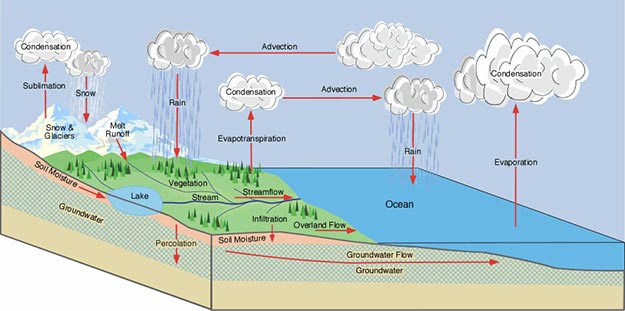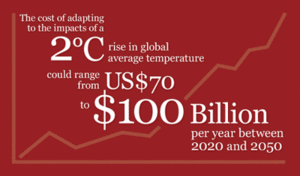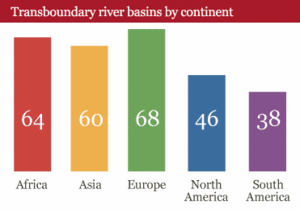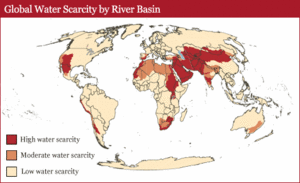The hydrologic cycle is a conceptual model that describes the storage and movement of water between the biosphere, atmosphere, lithosphere, and the hydrosphere (see Figure 1). Water on our planet can be stored in any one of the following major reservoirs: atmosphere, oceans, lakes, rivers, soils, glaciers, snowfields, and groundwater. Water moves from one reservoir to another by way of processes like evaporation, condensation, precipitation, deposition, runoff, infiltration, sublimation, transpiration, melting, and groundwater flow.
The oceans supply most of the evaporated water found in the atmosphere. Of this evaporated water, only 91% of it is returned to the ocean basins by way of precipitation. The remaining 9% is transported to areas over landmasses where climatological factors induce the formation of precipitation. The resulting imbalance between rates of evaporation and precipitation over land and ocean is corrected by runoff and groundwater flow to the oceans. Read more












